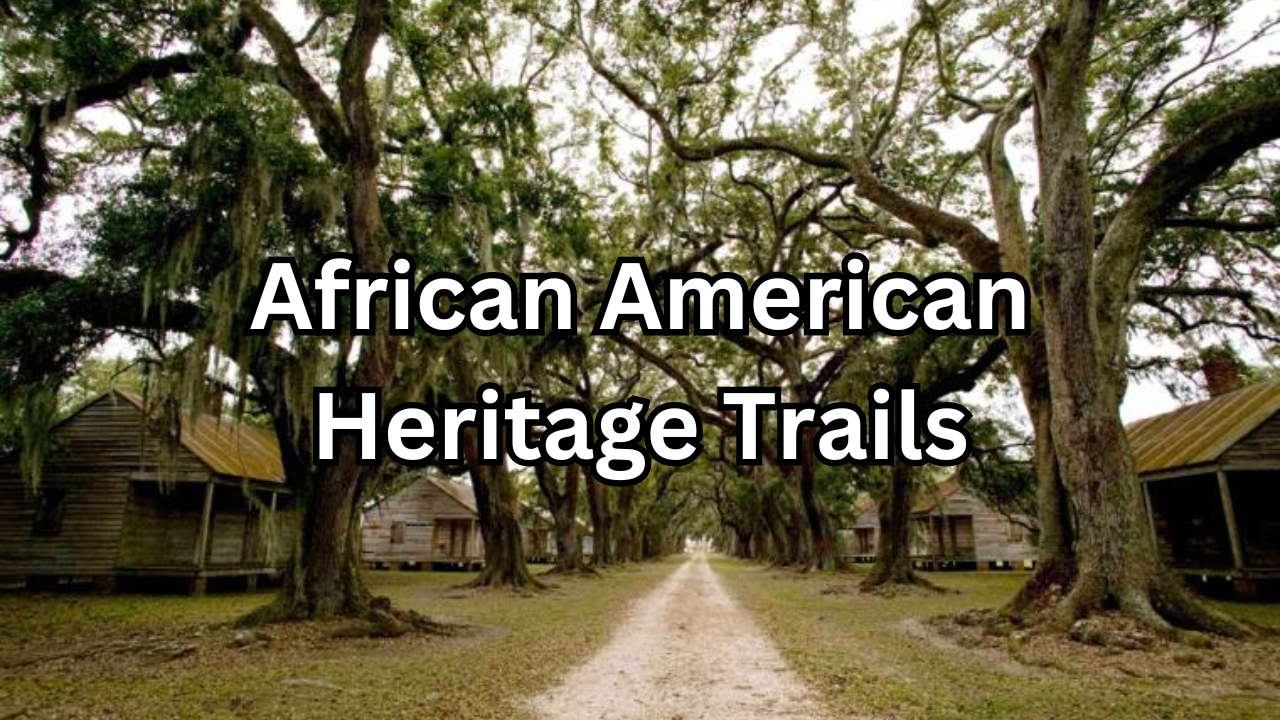Table of Contents
Introduction
African American Heritage Trails are vital cultural and historical pathways that celebrate the rich and diverse contributions of African Americans to the nation’s history. These trails offer an immersive experience into the stories, struggles, and triumphs of African Americans, showcasing their significant roles in shaping the cultural and social landscape of the United States.
Heritage trails serve as educational tools and preservation efforts, providing visitors with a deeper understanding of the experiences and achievements of African Americans. By exploring these trails, one gains insight into the historical milestones and personal stories that have profoundly impacted American society.
The significance of African American Heritage Trails lies not only in their role as educational resources but also in their capacity to honor the legacy of influential figures, historical events, and cultural movements. Through a journey along these trails, visitors can engage with the past, reflect on ongoing challenges, and appreciate the enduring spirit of resilience and creativity that characterizes African American history.
Overview of the Significance of Heritage Trails
Heritage trails are more than mere paths—they are living narratives that encapsulate the essence of a community’s history and cultural heritage. These trails serve as crucial conduits for preserving historical memories, celebrating cultural achievements, and providing context to the experiences that have shaped our society.
The Role of Heritage Trails in Preserving and Educating About African American History
- Preservation of Historical Sites: African American Heritage Trails safeguard and maintain key sites that are integral to understanding the African American experience. By preserving historical tour landmarks, homes, churches, and neighborhoods, these trails ensure that the stories and contributions of African Americans are not lost to time but are instead honored and remembered.
- Educational Opportunities: Heritage trails offer a structured and accessible way for individuals to learn about African American history. Through informative plaques, guided tours, and educational programs, visitors gain insight into the significant events, figures, and cultural movements that have defined the African American experience. This educational aspect fosters greater awareness and appreciation among diverse audiences.
- Cultural Celebration: Beyond historical education, these trails celebrate the rich cultural heritage of African Americans. They highlight artistic, musical, and social contributions that have enriched American culture. By showcasing this vibrant heritage, the trails help to instill pride and recognition of African American achievements and traditions.
- Community Engagement and Reflection: Heritage trails often involve local communities in their development and maintenance, fostering a sense of ownership and pride. They also provide spaces for reflection and dialogue, encouraging discussions about historical and contemporary issues related to race and identity.
- Inspiration and Legacy: By connecting visitors with the past, African American Heritage Trails inspire future generations. They offer a tangible link to the struggles and successes of those who came before, promoting a deeper understanding of the ongoing impact of their legacy on current and future societal developments.
In sum, African American Heritage Trails play a vital role in preserving the past, educating the present, and inspiring future generations, all while celebrating the profound contributions of African Americans to the fabric of American history and culture.
Harlem Renaissance: Cultural Revival in New York City
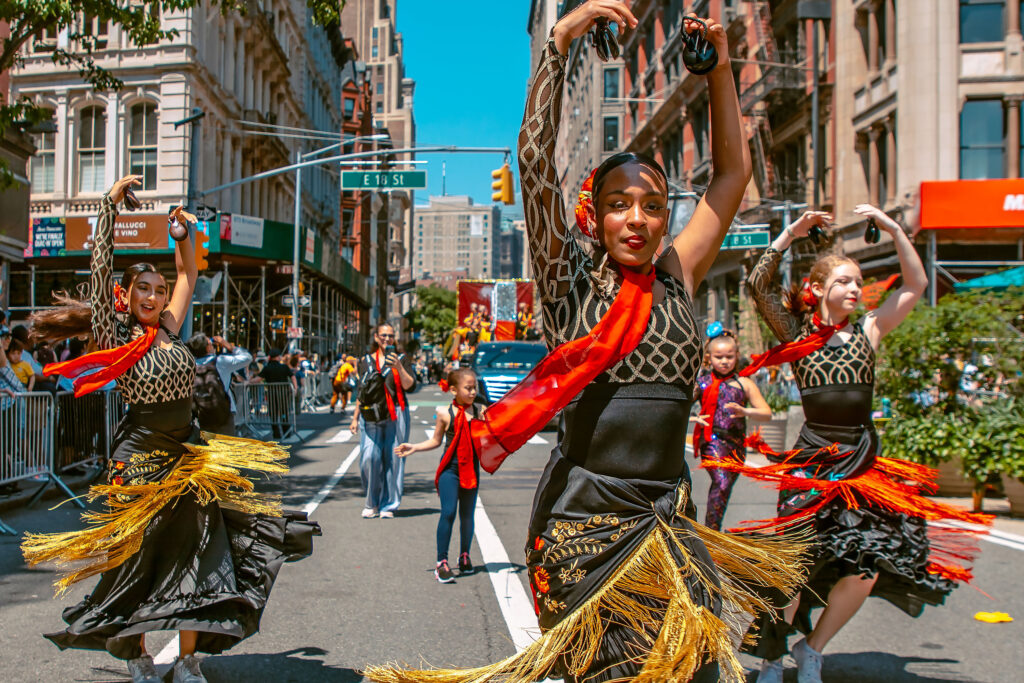
The Harlem Renaissance was a pivotal cultural and intellectual movement that emerged in the early 20th century, marking a profound period of artistic and social flourishing within the African American community. Centered in Harlem, New York City, this renaissance celebrated African American culture and made significant contributions to American literature, music, art, and thought.
Key Sites
- Apollo Theater: As one of the most iconic venues of the Harlem Renaissance, the Apollo Theater has been a launching pad for countless African American artists. Established in 1934, the Apollo became a central stage for performers such as Ella Fitzgerald, James Brown, and Billie Holiday. Its “Amateur Night” is particularly renowned for discovering new talent, and the theater continues to celebrate the legacy of the Harlem Renaissance with performances and events that highlight its rich cultural heritage.
- Schomburg Center for Research in Black Culture: Named after Arturo Schomburg, a prominent scholar and collector of African American history, the Schomburg Center is a major research library and cultural institution. Located in Harlem, it houses extensive collections of books, manuscripts, photographs, and artifacts related to African American history and culture. The center plays a crucial role in preserving the legacy of the Harlem Renaissance and continues to be a resource for scholars, students, and the public.
Influential Figures
- Langston Hughes: A central figure of the Harlem Renaissance, Langston Hughes was a poet, novelist, and playwright whose work vividly depicted the African American experience. His poetry collections, such as “The Weary Blues” and “Montage of a Dream Deferred,” reflect the struggles and aspirations of African Americans, capturing the spirit of the Harlem Renaissance with themes of resilience, hope, and cultural pride.
- Zora Neale Hurston: Another influential writer of the Harlem Renaissance, Zora Neale Hurston is celebrated for her novel “Their Eyes Were Watching God,” which is renowned for its exploration of African American female identity and the rich cultural heritage of the South. Hurston’s work, characterized by its use of folklore, dialect, and narrative innovation, played a significant role in shaping the literary landscape of the time.
The Harlem Renaissance was a time of great creativity and cultural exchange, and the key sites and figures associated with this movement continue to inspire and educate. By visiting places like the Apollo Theater and the Schomburg Center, and by studying the works of Langston Hughes and Zora Neale Hurston, one gains a deeper understanding of the vibrant and transformative era that was the Harlem Renaissance.
Washington, D.C.: Civil Rights and Cultural Landmarks
Washington, D.C., serves as a powerful symbol of the struggle for civil rights and the broader narrative of African American history. The city is home to several key landmarks that commemorate the significant events and figures of the Civil Rights Movement and celebrate African American culture and contributions.
Key Sites
- National Museum of African American History and Culture: As part of the Smithsonian Institution, the National Museum of African American History and Culture stands as a testament to the African American experience. Opened in 2016, it is the newest addition to the Smithsonian’s museums and offers an extensive collection of artifacts, documents, and exhibitions that chronicle African American history from slavery through contemporary times. The museum’s design, featuring a striking corona-inspired facade, symbolizes the strength and resilience of the African American community. Its exhibits cover various aspects of African American life, including music, art, politics, and social justice.
- Martin Luther King Jr. Memorial: Located on the National Mall, the Martin Luther King Jr. Memorial honors the legacy of the civil rights leader and his contributions to the fight for racial equality. The memorial features a towering statue of Dr. King, carved from granite, and is inscribed with some of his most impactful quotes. Dedicated in 2011, it serves as a space for reflection on Dr. King’s vision of justice and equality and the ongoing work needed to achieve his dream.
Historical Context
Civil Rights Movement and Its Impact: The Civil Rights Movement, which gained momentum in the 1950s and 1960s, was a pivotal period in American history dedicated to ending racial segregation and discrimination against African Americans. The movement sought to achieve legislative and social change through peaceful protests, legal challenges, and grassroots activism.
Washington, D.C., was at the heart of many of the movement’s most significant events, including the 1963 March on Washington for Jobs and Freedom, where Dr. Martin Luther King Jr. delivered his iconic “I Have a Dream” speech. This demonstration was instrumental in drawing national and international attention to the issues of racial inequality and economic injustice.
The impact of the Civil Rights Movement is evident in the legislative achievements of the era, such as the Civil Rights Act of 1964 and the Voting Rights Act of 1965, which helped to dismantle institutional racism and expand civil rights protections. These landmark laws marked significant strides toward equality and set the stage for ongoing social and political change.
Washington, D.C.’s landmarks, including the National Museum of African American History and Culture and the Martin Luther King Jr. Memorial, provide a meaningful connection to this transformative period. They offer educational experiences and opportunities for reflection on the enduring legacy of the Civil Rights Movement and its continuing relevance in the pursuit of justice and equality.
Atlanta’s Civil Rights Legacy
Atlanta, Georgia, is a pivotal city in the history of the Civil Rights Movement and continues to be a significant center for exploring African American history and heritage. The city is home to several key sites that honor the legacy of civil rights leaders and commemorate the struggles and triumphs of the movement.
Key Sites
- Martin Luther King Jr. National Historic Site: This historic site encompasses several important locations related to the life and work of Dr. Martin Luther King Jr. It includes his childhood home, the historic Ebenezer Baptist Church where he and his father preached, and the Martin Luther King Jr. Center for Nonviolent Social Change. The site offers visitors a comprehensive understanding of Dr. King’s life, his role in the Civil Rights Movement, and his philosophy of nonviolence. The visitor center provides exhibits and educational programs that highlight the achievements and challenges of the movement.
- Ebenezer Baptist Church: Founded in 1886 and located in the heart of Atlanta, Ebenezer Baptist Church is a landmark in the history of the Civil Rights Movement. It was the church where Martin Luther King Jr. was both baptized and ordained, and where he served as co-pastor alongside his father, Martin Luther King Sr. The church was a central gathering place for civil rights meetings and events, and its significance is deeply intertwined with the broader struggle for racial justice and equality.
Key Figures
- Martin Luther King Jr.: Dr. Martin Luther King Jr. is one of the most iconic figures in the Civil Rights Movement. As a leader of the Southern Christian Leadership Conference (SCLC) and a proponent of nonviolent resistance, he played a crucial role in advancing civil rights through speeches, marches, and demonstrations. His leadership was instrumental in significant events such as the Montgomery Bus Boycott and the March on Washington. Dr. King’s legacy is celebrated for its profound impact on American society and its ongoing influence on social justice movements around the world.
- Coretta Scott King: Coretta Scott King was not only the wife of Martin Luther King Jr. but also a formidable activist in her own right. She was a key figure in the Civil Rights Movement, working alongside her husband and continuing his legacy after his assassination. Coretta Scott King was deeply involved in advocating for civil rights, women’s rights, and international peace. She played a significant role in establishing the Martin Luther King Jr. Center for Nonviolent Social Change and in promoting the establishment of Martin Luther King Jr. Day as a federal holiday.
Atlanta’s Civil Rights legacy is profoundly represented through these key sites and figures. By exploring the Martin Luther King Jr. National Historic Site and Ebenezer Baptist Church, visitors can gain a deeper appreciation for the struggles and triumphs of the Civil Rights Movement, as well as the enduring impact of its leaders.
Richmond’s African American History
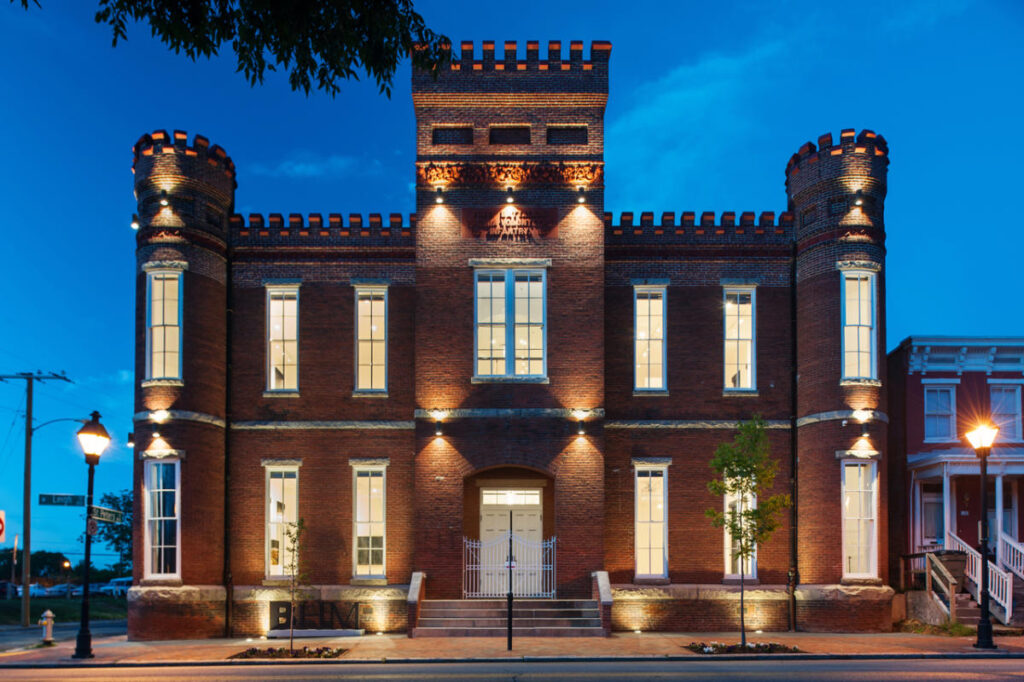
Richmond, Virginia, plays a crucial role in understanding African American history, particularly in the context of the post-Civil War era and Reconstruction. The city’s historical sites offer insights into the experiences and contributions of African Americans during a transformative period in American history.
Key Sites
- Virginia Union University: Founded in 1865, Virginia Union University is one of the oldest historically Black universities in the country. The university played a significant role in the education and empowerment of African Americans during the Reconstruction era and beyond. It served as a center for African American intellectual and political leadership and continues to be an important institution for higher education and community development. The campus itself reflects the rich history of African American academic and social progress.
- Maggie L. Walker National Historic Site: This site honors Maggie L. Walker, a pioneering African American businesswoman and community leader. Walker was the first African American woman to charter a bank in the United States, the St. Luke Penny Savings Bank, which played a key role in providing financial services to the African American community. The historic site includes Walker’s restored home, where visitors can learn about her significant contributions to economic empowerment and civil rights, as well as her role in various organizations advocating for social justice.
- Richmond Slave Trail: The Richmond Slave Trail provides a powerful and sobering look at the city’s role in the transatlantic slave trade. The trail follows the historic path where enslaved Africans were brought to Richmond and sold at auction. It includes significant sites such as the Old Slave Mart Museum and the Lumpkin’s Jail, which offer educational exhibits and memorials honoring the lives and struggles of enslaved individuals. The trail serves as a poignant reminder of the historical realities of slavery and its impact on Richmond’s development.
Historical Significance
Post-Civil War Era and Reconstruction: The post-Civil War era and Reconstruction period were times of profound change and challenge for African Americans. Following the end of the Civil War in 1865, the Reconstruction era sought to address the political, social, and economic needs of formerly enslaved people and to rebuild the South. Richmond, as the former capital of the Confederacy, was at the heart of these transformative efforts.
During Reconstruction, African Americans in Richmond and beyond worked to establish educational institutions, secure economic opportunities, and gain political rights. Despite significant progress, they faced considerable resistance and backlash, including the rise of segregationist policies and the enforcement of Jim Crow laws.
The legacy of the post-Civil War and Reconstruction periods is reflected in the historical sites of Richmond. Virginia Union University represents the strides made in education and self-determination, while the Maggie L. Walker National Historic Site highlights the entrepreneurial spirit and leadership of African Americans. The Richmond Slave Trail provides a critical perspective on the deep-seated historical injustices that shaped the city’s development and the ongoing struggle for racial equality.
These sites collectively offer a comprehensive view of Richmond’s African American history, celebrating achievements while acknowledging the challenges faced during a pivotal era in American history.
Montgomery’s Civil Rights Journey

Montgomery, Alabama, is a pivotal city in the history of the Civil Rights Movement, marked by significant events and landmarks that played a crucial role in advancing the cause of racial equality. The city’s key sites and historical events offer a profound look into the struggle for civil rights and the enduring legacy of activism and resistance.
Key Sites
- National Memorial for Peace and Justice: Also known as the Lynching Memorial, this site is dedicated to the victims of racial terror lynchings in the United States. Opened in 2018, the memorial features over 800 steel columns, each inscribed with the names of lynching victims, creating a powerful visual representation of the scale and impact of racial violence. The memorial aims to confront the history of racial injustice and promote discussions about the legacy of lynching and its ongoing effects on communities.
- Legacy Museum: Located near the National Memorial for Peace and Justice, the Legacy Museum provides an in-depth exploration of African American history from slavery to mass incarceration. The museum’s exhibits address the brutal history of racial oppression and the impact of systemic injustice on African American lives. Through immersive displays and powerful storytelling, the Legacy Museum offers a comprehensive understanding of the historical and contemporary issues related to racial discrimination.
- Dexter Avenue King Memorial Baptist Church: This historic church is significant for its role in the Civil Rights Movement as the former pastorate of Dr. Martin Luther King Jr. During his time at Dexter Avenue King Memorial Baptist Church, Dr. King emerged as a prominent leader in the struggle for civil rights. The church was a key site for civil rights meetings and strategy sessions, and it was instrumental in organizing the Montgomery Bus Boycott. The church is now a national historic landmark and a symbol of Dr. King’s commitment to justice and equality.
Major Events
Montgomery Bus Boycott: The Montgomery Bus Boycott, which began in December 1955, was a landmark event in the Civil Rights Movement. Sparked by the arrest of Rosa Parks for refusing to give up her bus seat to a white person, the boycott was a 381-day mass protest against racial segregation on public buses. Led by Dr. Martin Luther King Jr. and other local activists, the boycott demonstrated the power of nonviolent resistance and collective action. The successful outcome of the boycott, which led to a Supreme Court ruling that segregation on public buses was unconstitutional, marked a significant victory in the fight for civil rights.
Role in the Civil Rights Movement: Montgomery was a central stage for the Civil Rights Movement, serving as a focal point for key protests, legal battles, and social changes. The city’s role in the Montgomery Bus Boycott, the formation of the Southern Christian Leadership Conference (SCLC) by Dr. King, and other civil rights activities solidified its importance in the movement. The city’s historical sites and events reflect the courage and determination of those who fought for racial equality and justice.
Montgomery’s Civil Rights Journey is deeply intertwined with the broader narrative of the struggle for civil rights in America. By visiting sites like the National Memorial for Peace and Justice, the Legacy Museum, and the Dexter Avenue King Memorial Baptist Church, individuals can gain a deeper understanding of the historical and ongoing efforts to achieve racial justice and equality.
New Orleans: Cultural and Historical Tapestry
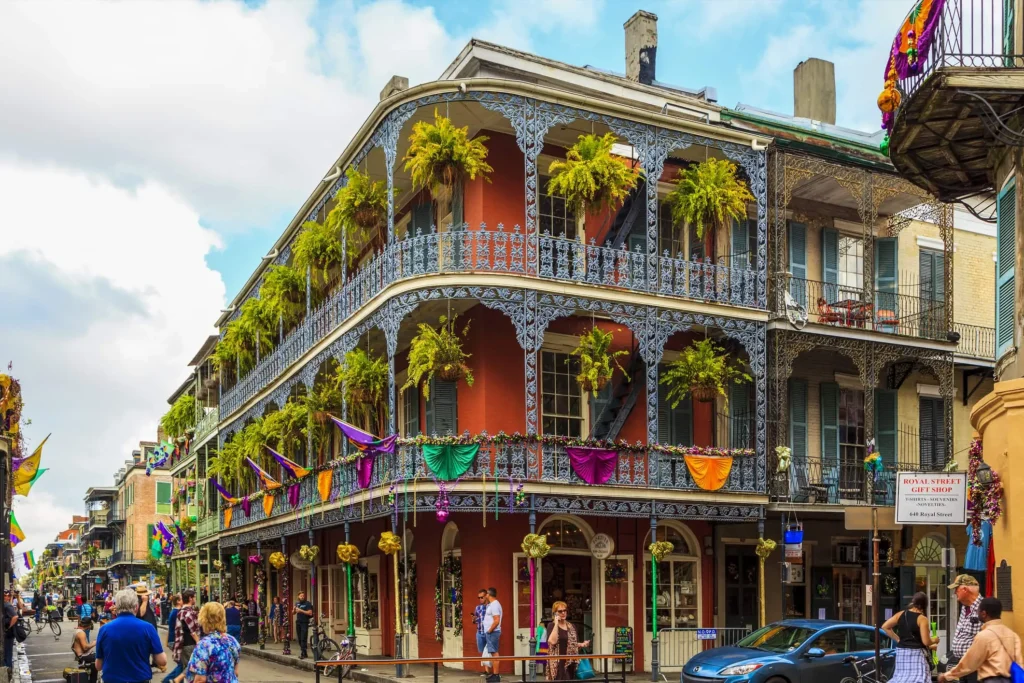
New Orleans, Louisiana, is a city renowned for its vibrant culture, rich history, and unique contributions to American music, art, and traditions. The city’s cultural tapestry is woven from its diverse heritage, and its key sites offer a window into the dynamic and multifaceted history of its African American communities.
Key Sites
- Treme Neighborhood: One of the oldest African American neighborhoods in the United States, Treme is a historic area known for its deep cultural and musical roots. Founded in the early 19th century, Treme has been a significant center for African American life and culture in New Orleans. The neighborhood is renowned for its contributions to jazz music and its role in preserving the traditions of Creole culture. Walking through Treme, visitors can experience the enduring legacy of African American heritage through its historic homes, community events, and vibrant local culture.
- Backstreet Cultural Museum: Located in Treme, the Backstreet Cultural Museum is dedicated to preserving and showcasing the rich traditions of New Orleans’ African American community. The museum features an extensive collection of artifacts, costumes, and memorabilia related to the city’s Mardi Gras Indian tribes, social aid and pleasure clubs, and jazz funerals. Founded by Sylvester Francis, the museum offers an intimate look at the cultural practices and celebrations that are integral to New Orleans’ identity.
- Congo Square: Situated in Louis Armstrong Park, Congo Square is a historic site that played a crucial role in the development of African American culture and music in New Orleans. In the 19th century, it was a gathering place where enslaved and free Africans could come together to socialize, dance, and perform music. The square was a birthplace of jazz, as it was here that various musical traditions, including African rhythms and European melodies, fused to create this uniquely American genre. Today, Congo Square remains a symbol of the city’s cultural vitality and historical significance.
Cultural Contributions
Music: New Orleans is famously known as the birthplace of jazz, a genre that emerged in the city in the early 20th century. The city’s musical legacy includes influential figures such as Louis Armstrong, Duke Ellington, and Jelly Roll Morton. Jazz, along with other genres like blues, rhythm and blues, and funk, has its roots deeply embedded in the city’s African American culture. The vibrant music scene of New Orleans continues to attract musicians and enthusiasts from around the world.
Arts: New Orleans is also renowned for its rich artistic traditions, including visual arts, dance, and literature. The city’s African American artists have made significant contributions to the broader cultural landscape, with notable figures such as painter and sculptor Clementine Hunter and writer and poet Richard Wright. The city’s art scene reflects a blend of cultural influences and artistic innovation.
Traditions: The traditions of New Orleans, including Mardi Gras celebrations, second line parades, and jazz funerals, are deeply rooted in the city’s African American heritage. These cultural practices are characterized by vibrant costumes, music, and communal participation, and they play a central role in maintaining the city’s unique cultural identity.
New Orleans’ cultural and historical tapestry is a testament to its rich and diverse heritage. By exploring sites like the Treme neighborhood, the Backstreet Cultural Museum, and Congo Square, visitors can gain a deeper appreciation for the city’s African American contributions to music, arts, and traditions.
Charleston’s Rich African American Heritage
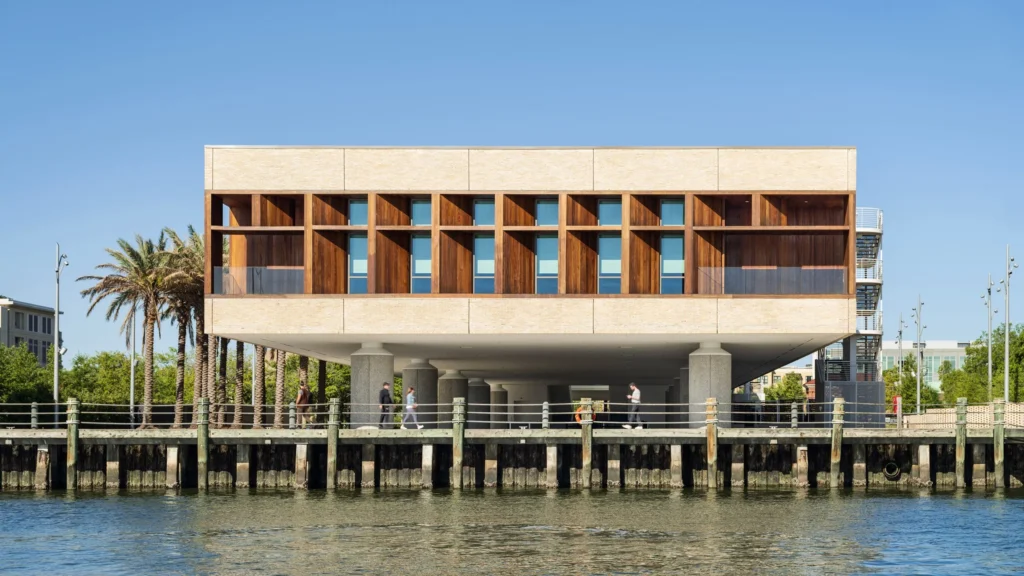
Charleston, South Carolina, is a city deeply intertwined with the history of African Americans, reflecting both the legacy of the transatlantic slave trade and the vibrant cultural traditions of the Gullah community. The city’s historical sites and cultural heritage offer valuable insights into the African American experience in the American South.
Key Sites
- Old Slave Mart Museum: Located in the heart of Charleston’s historic district, the Old Slave Mart Museum is situated in a building that once served as an auction house for enslaved people. Opened in 1859, it was one of the largest slave markets in the city until the abolition of slavery. The museum now serves as a powerful educational resource, offering exhibits and artifacts that document the history of the slave trade in Charleston and its impact on the lives of enslaved individuals and their descendants. The museum provides a sobering but essential perspective on the legacy of slavery and its enduring effects on society.
- Avery Research Center for African American History and Culture: Affiliated with the College of Charleston, the Avery Research Center is dedicated to the study and preservation of African American history and culture in the Lowcountry region. The center houses an extensive collection of manuscripts, photographs, oral histories, and artifacts related to African American life and history. Through its exhibitions, research initiatives, and public programs, the Avery Research Center plays a crucial role in documenting and interpreting the contributions and experiences of African Americans in Charleston and beyond.
Historical Context
Slave Trade: Charleston was a major port in the transatlantic slave trade, and the city’s economy was heavily dependent on the labor of enslaved Africans. The Old Slave Mart Museum highlights the significant role that Charleston played in the trade, providing insight into the inhumanity of slavery and the system of exploitation that shaped the city’s development. The legacy of this period is evident in the social and economic structures that persisted long after the end of slavery, influencing the experiences of African Americans in Charleston and the surrounding region.
Gullah Culture: The Gullah people are descendants of enslaved Africans who were brought to the Lowcountry region of South Carolina and Georgia. They have preserved a unique cultural heritage that combines African, Caribbean, and American influences. The Gullah community is known for its distinctive language, crafts, and traditions, including storytelling, music, and culinary practices. This cultural richness is a vital part of Charleston’s heritage and is celebrated through local festivals, arts, and community events.
Charleston’s rich African American heritage is a testament to the city’s complex history and cultural diversity. By visiting sites like the Old Slave Mart Museum and the Avery Research Center for African American History and Culture, individuals can gain a deeper understanding of the historical and cultural dimensions of Charleston’s African American experience. These sites offer valuable opportunities to reflect on the past and appreciate the enduring legacy of African American contributions to the city’s cultural landscape.
Important African American Figures and Their Impact
Throughout American history, numerous African American individuals have made profound contributions that have shaped the course of the nation. These key figures have influenced various aspects of society, including politics, literature, social justice, and civil rights. Their legacies continue to inspire and impact contemporary discussions on equality and human rights.
Overview of Key Individuals and Their Contributions
- Frederick Douglass:
- Contributions: Frederick Douglass was a prominent abolitionist, writer, and speaker who escaped from enslavement and became one of the leading voices in the fight against slavery. His powerful autobiographies, including “Narrative of the Life of Frederick Douglass, an American Slave,” offered firsthand accounts of the brutality of slavery and advocated for its abolition. Douglass was also an influential advisor to President Abraham Lincoln and played a significant role in promoting the enlistment of African American soldiers during the Civil War. His advocacy extended beyond abolition to include women’s rights and equality.
- Harriet Tubman:
- Contributions: Harriet Tubman was a courageous conductor of the Underground Railroad, leading hundreds of enslaved people to freedom. Born into slavery, Tubman escaped and returned multiple times to rescue other enslaved individuals, earning her the nickname “Moses of her People.” Her efforts were instrumental in the abolitionist movement, and she also worked as a nurse, spy, and scout during the Civil War, contributing to the Union’s success. Tubman’s bravery and unwavering commitment to freedom have made her an enduring symbol of resistance and courage.
- Martin Luther King Jr.:
- Contributions: Martin Luther King Jr. was a pivotal leader in the Civil Rights Movement, renowned for his advocacy of nonviolent resistance and his powerful speeches, including the iconic “I Have a Dream” speech delivered during the 1963 March on Washington. King’s leadership in campaigns such as the Montgomery Bus Boycott and the Selma to Montgomery marches was instrumental in achieving significant legislative changes, including the Civil Rights Act of 1964 and the Voting Rights Act of 1965. His dedication to justice, equality, and nonviolent protest continues to inspire social justice movements today.
- Rosa Parks:
- Contributions: Often referred to as “the mother of the civil rights movement,” Rosa Parks’ refusal to give up her bus seat to a white man in Montgomery, Alabama, sparked the Montgomery Bus Boycott and became a powerful symbol of resistance to racial segregation. Parks’ act of defiance and her subsequent involvement in civil rights activism helped galvanize the movement and brought national attention to the issue of racial discrimination.
- W.E.B. Du Bois:
- Contributions: W.E.B. Du Bois was a leading intellectual and activist who co-founded the National Association for the Advancement of Colored People (NAACP). His scholarly work, including “The Souls of Black Folk,” provided a critical analysis of the social, economic, and political conditions affecting African Americans. Du Bois was a proponent of the “Talented Tenth,” advocating for the education and leadership of the most talented African Americans to advance the race and achieve social justice.
- James Baldwin:
- Contributions: James Baldwin was a renowned writer and social critic whose works, including essays, novels, and plays, explored complex themes of race, identity, and human rights. Baldwin’s influential books, such as “Go Tell It on the Mountain” and “The Fire Next Time,” provided a compelling critique of racial injustice and offered a profound perspective on the African American experience. His eloquence and insight continue to resonate in discussions about race and social justice.
These African American figures have made indelible marks on American history through their courage, intellect, and dedication to justice. Their contributions have shaped the nation’s understanding of freedom, equality, and human rights, and their legacies continue to inspire and inform the ongoing struggle for a more just and equitable society.
Planning and Visiting African American Heritage Trails
Exploring African American heritage trails provides a profound opportunity to learn about the rich and diverse history, culture, and contributions of African Americans. Effective planning and utilizing available resources can enhance the experience and provide a deeper understanding of the historical and cultural significance of these sites.
Tips for Planning Visits
- Research and Prioritize:
- Identify Key Sites: Research the major sites along the heritage trails you wish to visit. Look for landmarks, museums, historical buildings, and cultural institutions that are significant to the African American experience.
- Create an Itinerary: Based on your interests and available time, prioritize the sites you want to visit. Create an itinerary that allows for a meaningful exploration of each location without feeling rushed.
- Check for Opening Hours and Accessibility:
- Verify Hours: Confirm the operating hours of museums, historic sites, and other attractions before you go. Some sites may have specific visiting hours or may be closed on certain days.
- Accessibility: Ensure that the sites you plan to visit are accessible to all members of your group, including considerations for physical accessibility and transportation options.
- Plan for Guided Tours:
- Schedule Tours: Many heritage sites offer guided tours that provide in-depth information and context. Booking these tours in advance can enhance your visit and ensure that you get the most out of your experience.
- Local Guides: Consider engaging local historians or cultural guides who can offer unique insights and personal perspectives on the history and significance of the sites.
- Prepare for Cultural Sensitivity:
- Respect: Approach each site with respect and sensitivity to its historical and cultural significance. Be mindful of the stories and experiences represented, and engage with the material thoughtfully.
- Educational Materials: Read any available educational materials or books about the sites and figures you will encounter. This preparation can deepen your understanding and appreciation.
- Use Local Resources:
- Visitor Centers: Visit local visitor centers or tourism offices for additional information and recommendations. They can provide maps, brochures, and advice on local attractions.
- Local Events: Check for any local events, lectures, or special exhibitions that may be happening during your visit, as these can add to your experience.
Resources for Additional Information and Guided Tours
- Official Websites and Tourism Boards:
- Many cities and heritage trails have official websites that provide comprehensive information on sites, tours, and visitor guidelines. These sites often include contact information, tour schedules, and ticketing options.
- Cultural and Historical Organizations:
- Organizations such as the National Trust for Historic Preservation and the Smithsonian Institution often have resources and information about African American heritage sites and trails. They may also offer guides and educational resources.
- Travel and Tourism Apps:
- Utilize travel apps and platforms such as TripAdvisor, Yelp, and Google Maps to find reviews, recommendations, and additional details about the heritage sites and guided tours.
- Local Historical Societies:
- Contact local historical societies or cultural organizations for information on guided tours, educational programs, and historical insights. These groups often provide valuable resources and can connect you with knowledgeable guides.
- Books and Documentaries:
- Look for books, documentaries, and online resources that cover the history and significance of the heritage trails you plan to visit. These materials can provide context and enrich your understanding of the sites.
By following these tips and utilizing available resources, you can create a rewarding and educational experience while exploring African American heritage trails. These trails offer a valuable opportunity to connect with the rich history and cultural heritage of African Americans and to gain a deeper appreciation for their contributions to society.
Conclusion
Exploring African American heritage trails offers a profound journey through the rich tapestry of history, culture, and contributions that have shaped the nation. From the pivotal sites in Montgomery, where the fight for civil rights was prominently marked, to the vibrant cultural landscape of New Orleans and the enduring legacy of Charleston, these trails provide a window into the diverse experiences and monumental achievements of African Americans.
By visiting key landmarks such as the National Memorial for Peace and Justice in Montgomery, the Treme neighborhood in New Orleans, and the Old Slave Mart Museum in Charleston, visitors gain invaluable insights into the struggles, triumphs, and cultural richness of African American history. Each site and figure—whether it’s the resolute leadership of Martin Luther King Jr., the courageous actions of Harriet Tubman, or the influential writings of James Baldwin—contributes to a broader understanding of the fight for equality, justice, and cultural preservation.
Effective planning and thoughtful engagement enhance the experience of visiting these heritage trails. By researching key sites, preparing for guided tours, and utilizing available resources, visitors can ensure a meaningful and respectful exploration of African American history. This approach not only honors the legacies of influential figures and historical events but also fosters a deeper appreciation of the ongoing contributions of African Americans to the nation’s cultural and social fabric.
As we conclude this exploration of African American heritage trails, it is clear that these journeys are not merely visits to historical sites but are opportunities to connect with a legacy that continues to influence and inspire. Engaging with these trails helps preserve and celebrate the profound impact of African American history, ensuring that the stories of struggle, resilience, and achievement are remembered and revered.
